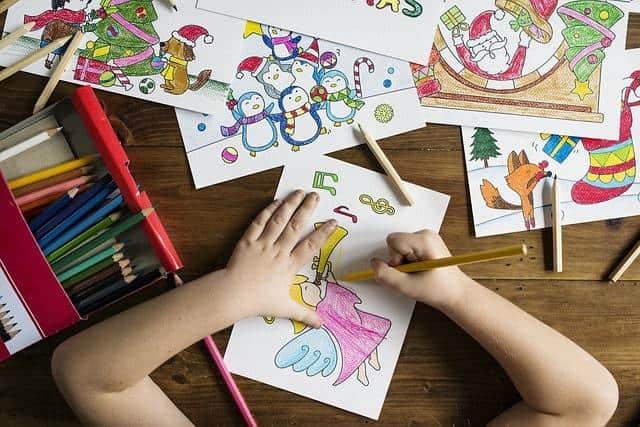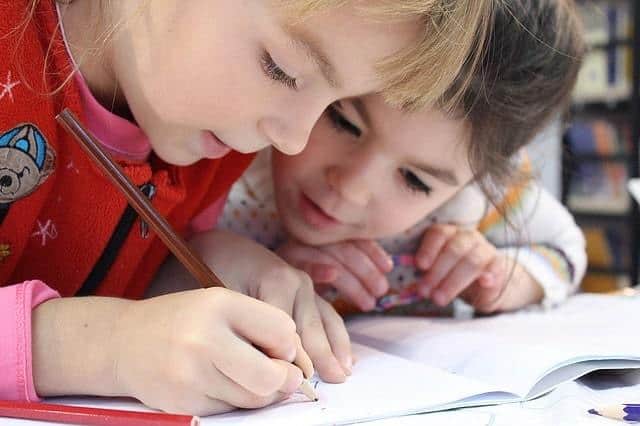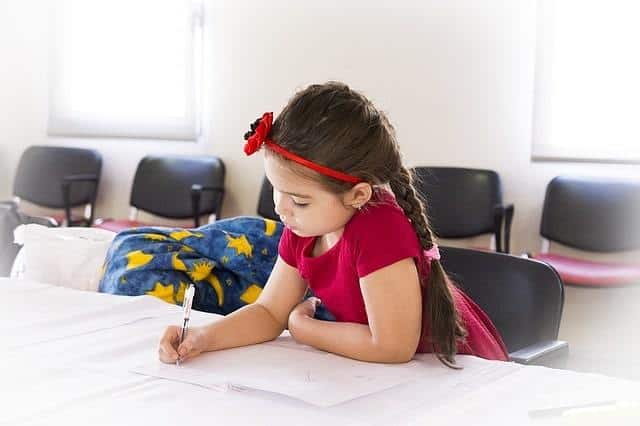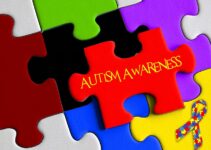If you are a parent of a child with dyslexia, you’ve witnessed the struggle:
It is difficult to understand why your brain has such a hard time learning how to read, and it gets even harder when you see a lot of your friends mastering reading with far less effort. This is why it is often challenging for a kid with dyslexia to stay motivated to learn. On top of that, they often question how smart or capable they are, which tends to affect their self-confidence.
These kids don’t have it easy.
However, it’s important to know that their struggles are easier to deal with when their parents are understanding, supportive and knowledgeable about dyslexia. And although it takes a lot of mental strength, positivity, and creativity, there is a lot you can do as a parent to help your kid cope with the difficulties.
Based on my experience working with kids with diagnosed dyslexia and ones who are at-risk, along with their parents, and my cooperation with reading specialists and speech therapists, I’ve collected the activities that have proven to be the most effective.
In this article, I am sharing these activities with you.
Table of Contents
- So, what is Dyslexia?
- Who is at Risk?
- Activities for Kids at Risk for Dyslexia
- Activities for Children who have been diagnosed with Dyslexia
- Dyslexia 101 for Parents – Understand what your child is struggling with
- Dyslexia 101 for Children– Teaching your kid on how to self-advocate
- Adding Visuals to the Reading Material
- Learn New Vocabulary Words in a Context
- Reading with your Child
- Hands-on Learning Experiences
- Use Audio-books
- Provide them with easy-to-understand structure
- Nurture those things they love and are talented in
- Online applications and other resources
- You can make a difference!
So, what is Dyslexia?
Dyslexia is a language-based learning disability.
The reading and spelling performance of kids with dyslexia is significantly behind what may be expected, considering their intelligence and education.
Challenges they experience may be linked to the processing of language-based information, their short-term or working memory, coordination, and sequencing, which can affect reading, spelling, comprehension, time assessment and planning of tasks, numeracy, oral skills and the retention of material presented in both visual and auditory modes. [1]
Early diagnosis can help a lot in providing support for a student to keep up with schoolwork.
Parents can engage experts such as reading specialists, speech therapists or psychologists to work with the child individually and also request adjustments in schools that would allow kids with dyslexia to learn successfully.
The effort parents put into work at home is equally important. There are a lot of effective strategies, activities, and tools that can be used at home to help kids with dyslexia learn better.
Who is at Risk?
Signs of dyslexia are difficult to recognize before school.
However, there are several signs that can signal that your child is at risk for dyslexia.
Some of them are:
- Late talking
- Difficulties in learning new words
- Challenges in pronouncing words correctly, reversing sounds or confusing words that sound alike
- Difficulties remembering instructions, mixing or missing steps
- Difficulty recognizing rhymes, playing rhyming games or learning songs with rhyme
- Baby talk that is inappropriate for their age
- Problems remembering what letters look like, mixing numbers and colors
- Difficulties in remembering the days in the week, seasons etc. (sequences with certain order)
Dyslexia tends to run in families. So, if you or your spouse have dyslexia, or if your child has a sibling who has dyslexia, there is a probability that they are at risk.
Still, there is a lot that can be done before school starts that can significantly help with your child’s learning in the long run!
Activities for Kids at Risk for Dyslexia
If you feel like your child is at risk for dyslexia, here are some of the activities that can be very effective in helping them improve skills that can allow them to compensate for the challenges that accompany the disability.
These activities are useful for all kids, but especially those at risk for dyslexia.
Fine motor activities
Fine motor skills are necessary for the activities that involve smaller movements in wrists, hands and fingers. They are crucial for our ability to perform most of the usual, daily self-care tasks such as buttoning clothes, cutting food, tying our shoes or brushing teeth, but also for precise coloring, drawing and writing.
Activities that can help with improving these skills:
- Easy crafts for kids. Give them opportunities to use different materials such as paper, cardboard, wood or glue, and color, cut or combine them to make something new.
- Coloring exercises, mazes on paper or exercises that involve drawing shapes of different sizes.
- Opening and closing jars or bottles, tying shoes, buttoning clothes, etc.
- Beading, sewing, knitting etc.
You can find more ideas here!
Word-building Activities
Start with shorter words that are easier to pronounce and try to make activity as fun as possible. Make it multisensory, colorful, engaging!
You can do this by writing in the sand, cutting out the letters from paper or cardboard or making them out of clay or playdough. Putting letters on pebbles, bottle tops or Duplo Bricks is another thing you can do to make them more fun to combine.
By helping your child “build” simple words, you are not only helping them learn how to spell words, but also how to recognize the similarities between how they are pronounced. With that, you are also helping with phonological awareness. Emphasize the length of different vowels. Model proper pronunciation.
You can find more ideas here.
If your child likes worksheets, there are plenty online for free!
Activities for Working Memory
Working memory allows us to hold on to and manipulate information that we have in our short-term memory. Kids with dyslexia usually have deficits in their working memory, which makes it hard to retain the image of letters, match them with sounds and perform the task of pronouncing or reading the word out loud.
Activities such as riddles, solving logic problems, playing board games, listening actively to stories and retelling them, and doing a task that involves giving or following instructions (such as building, creating or cooking something) are just some of the activities that can help with boosting the capacity of your child’s working memory.
You can read more about activities for working memory and other executive function skills here: link to the article with the EF activities
Activities that involve sorting, categorization and planning
Being able to organize the activity at hand is one of the most important skills kids need in school. So, why should we wait for school to give them opportunities to practice it?
Try involving them in the activities around the house. Sorting laundry or dishes, organizing toys, or setting the table for dinner are some of the everyday activities that involve the mental processes of planning.
If you would like to have your child work on these skills through pen and paper exercises or online activities, pick those games that involve identifying the missing piece, a piece that does not belong in a group, putting together a puzzle or reorganizing the steps in a process.
Sesame Street online games offer plenty of these online.
Activities for Phonological Awareness
Phonological awareness is the ability to identify, think about and manipulate sounds in spoken speech. This skill is crucial for being able to read. Kids with dyslexia struggle to recognize syllables and sounds in words and to identify the words that begin with the same sound or rhyme.
The children can improve their phonological awareness through listening to and learning poems and songs, and connecting movement such as clapping with segmenting words by syllables or identifying the first and the last sound of the word. These activities help children learn to be perceptive to different lengths of vowels.
You can borrow some great ideas from an experienced educator, Brian Smith or download some printables from Prekinders.com.
Check out some cool games that help both with phonological awareness and with learning the ABC’s, such as PhonemePop or Starfall.
Activities for Improving Visual Processing

Examples of such activities are:
- Where’s Waldo
- Find the difference between two seemingly identical pictures (try this one with pencil and paper version so that your child can work on fine motor skills too)
- Puzzles
- Finding similarities and differences in shapes and sizes between objects
- Matching shapes by color, shape or size
- Drawing in steps where they need to follow what is in each box (printables available online)
Activities for Improving Comprehension
Learning new words does not only mean knowing how to pronounce it, but also how to use it in a context. Children with dyslexia usually need more time understanding the differences between similar words, not only when they sound alike, but also when they have similar meaning.
To help them understand the word better, you can give more examples of how one word could be used. Put it more often in the context that is familiar to them. You can play a game in the car while you are driving and they are sitting in their car seat: you think of a word and start describing it, while they attempt to guess what it is. After they guess right, you can be the one guessing the word.
You can also ask them – how would you describe “word” to somebody that has never heard of that? Encourage them to put in effort in expressing their own understanding of a word and use examples to illustrate it.
Activities for Children who have been diagnosed with Dyslexia
All of the above-mentioned activities can still be very useful for kids after they start school and get diagnosed. However, we are recommending other activities that can be effective during school.
Dyslexia 101 for Parents – Understand what your child is struggling with
To help a dyslexic child, you need to know a lot about dyslexia. This is why the first step is getting the right information from reliable resources. Luckily, there are a lot of them available, both online and offline.
For a start, check out our article The Truth about Dyslexia by Dr Pierrette Mimi Poinsett, M.D.
Here are some other online resources, with useful information on dyslexia:
- Dyslexia.yale.edu
- Ldonline.org
- Dyslexiahelp.umich.edu
- Understood.org
And here are a few books you will surely find useful!
- Overcoming Dyslexia: A New and Complete Science-Based Program for Reading Problems at Any Level by Sally Shaywitz
Neuroscientist Dr Sally Shaywitz of Yale University presents scientific research in a way that could easily be understood by any parent trying to comprehend what’s going on in the brain of a dyslexic. It also includes exercises and techniques that can help you support your child.
- Dyslexic Advantage by Brock L. Eide
The book was referred to as “A must read for parents, educators, and people with dyslexia.” by Gordon F. Sherman, Ph.D., the Past-President International Dyslexia Association. It emphasizes the strengths of dyslexic children that are neglected more often than not.
Dyslexia 101 for Children– Teaching your kid on how to self-advocate
Not knowing why you are having such difficulties, despite the effort you are putting into your school work, can be very confusing for children who are just learning to read. If they feel like this is a permanent and irreversible deficit, they are likely to not invest effort into learning. This is usually when most parents see their kids giving up on homework.
This is why it necessary that you educate them on what dyslexia is and how it can be helped.
- Teach your kids what dyslexia is and what it is not (for example, it has nothing to do with how smart you are!)
- Teach them their rights (what their IEP allows them and what not)
- Teach them how to advocate for themselves (How to communicate their difficulties and ask for help when they need it)
Adding Visuals to the Reading Material
For a child who struggles with dyslexia, text is not just hard to understand but also very uninspiring. So, whenever you can add an image, symbol, diagram, or colors that can help with learning, go for it! Try to encourage your child to do the same.
Almost everything we study in school can be found through videos online. After your child has read all of the text there was in the study material, help them with understanding concepts through videos on Youtube or other platforms.
Having images in your mind to quickly associate with what you were studying can help a lot in recalling information.
Learn New Vocabulary Words in a Context

Help your child think of examples that include that word, based on their personal experience with the word so that they can better comprehend its meaning.
Reading with your Child
Children tend to dislike doing things they feel they do not do well. For kids with dyslexia, that is reading.
So, try to nurture their love for reading as much as possible. Encourage them to collect their own books and build their personal library. Help them pick the books they like so that you can read them together. Make reading a family activity that you all enjoy.
Watch this video for tips on how to pick books to read together:

Hands-on Learning Experiences
Dyslexia can make learning quite difficult, since most of school material involves reading. Having hands-on learning experiences your child enjoys can make a lot of difference for their motivation to continue to invest effort in learning.
Whenever possible, take them to museums, watch educational shows with them or work together on science projects that are not school-related.
Curiosity is a powerful driving force! Help them discover what they are passionate about and help them learn from practice. This way your child can better understand that not all of learning comes through the written word.
Check out this cool video about 10 easy science activities that will amaze kids:

Use Audio-books
There are other ways to consume books besides reading them. For kids with dyslexia, audiobooks are a great resource! They also encourage active listening and concentration.
You can find a lot of free audiobooks on Amazon. Again, let your child make the choice of which book they would like to listen to.
Audiobooks can accompany textbooks in helping students learn how to read. There are resources such as Learning Ally that are widely used in helping kids with dyslexia.
Provide them with easy-to-understand structure
Kids with dyslexia usually have problems following instructions and organizing their work. This is why getting ready for school, doing a chore, or working on homework can be quite challenging.
Help them understand the steps to getting something specific done. Sit with them to draft the structure of the activity. In organizing an activity with them, or modeling how the activity is organized, try to use more than just the words. Use colorful sheets or schedules to write the steps down, or even better, to illustrate them.
If they can go back to the organizer and put a star or a check next to the task they are done with, that also helps their working memory cope with challenges of that task. They do not need to keep all of the pieces of the activity in their heads at the same time. They can do one activity at a time and then simply go back to the organizer and see what comes next!
Nurture those things they love and are talented in
Students with dyslexia may struggle with self-confidence because of their inability to acquire seemingly simple skills. They might feel like they are less smart or capable than their peers. Many report low academic self-esteem and doubt their ability to be successful in school. [2]
This is why it is necessary to allow them to build their confidence in other activities. Those activities should be something they feel good about, where they can have achievements they are proud of.
Let them talk about their interests, show appreciation for what they do, and make sure that they know you acknowledge how good they are at doing something they love. This is an important way to build resilience and provide positive experiences for your child!
Online applications and other resources
The digital age allows more resources for kids than ever before. There are many applications that allow kids with dyslexia to practice language skills in a form that would be more fun for them.
Google them with your child and have them pick the activities that seem to be fun. If they get to participate in choosing them, they are more likely to use them actively.
Here are a few links that can help you find interactive games for children with dyslexia:
- Ixl.com
- Dyslexiahelp.umich.edu/tools/fun-games-for-dyslexics
- Learningworksforkids.com/2014/01/online-activities-for-helping-kids-with-dyslexia/
- Arcademics.com/games/
You can make a difference!
Use these activities not only to improve skills, but to bond with your child and help them tackle the difficulties they are facing.
These activities can help a lot in making learning easier and more enjoyable.
Remember that a passion for learning can compensate for all of the difficulties in school.
Just think of Albert Einstein! He had what were considered to be speech challenges, had difficulties adjusting to the rigid way of teaching and even dropped-out of school. His teachers misjudged his potential by claiming he would not accomplish much. [3, 4]
But he stayed passionately curious. That was the drive that made him one of the most influential scientists of all time.
Nurture your child’s talents, help them develop interests, acquire tools for learning and stay motivated to learn.
Your support makes a huge difference!
References:
- Chalkley, B., & Waterfield, J. (2001). Providing learning support for students with hidden disabilities and dyslexia undertaking fieldwork and related activities. University of Gloucestershire, Geography Discipline Network.
- Ingesson, S. G. (2007). Growing up with dyslexia: Interviews with teenagers and young adults. School Psychology International, 28(5), 574-591.
- Albert Einstein Biography – Biography.com
- Albert Einstein By Michio Kaku











Looking for resources to help my daughter and her 3 children. They all struggle with regular education. How do we get a diagnosis and treatment for families in the Bellingham area who have no money as a result of the disability and lack of getting upper education and jobs. Thanks so much